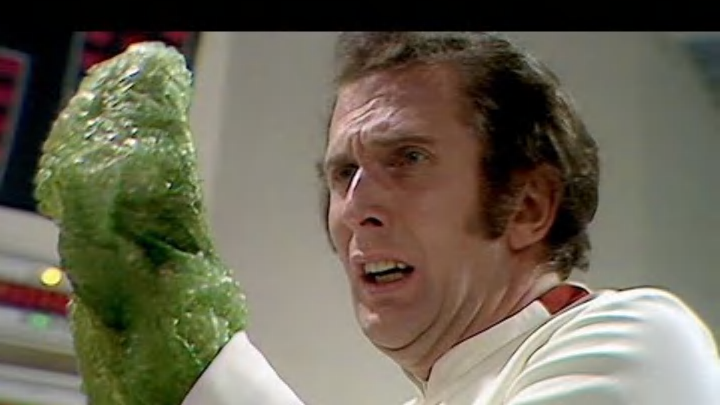Just a few days ago, the classic Fourth Doctor story “The Ark in Space” reached its 50th anniversary. Decades after its original broadcast, it still holds up extremely well, both as a Doctor Who serial and as a solid slice of horror.
What really stands out about the story is how it explores the theme of body horror through the alien species the Wirrn, an insectoid race that reproduces by infecting and absorbing others, both in mind and body.
I’ve written before about why the Wirrn should come back. They’re such great monsters, and with their ability to absorb the knowledge of their victims, there’s definitely potential to tell a fresh story with the insects without simply trying to repeat the success of their original appearance.
But after re-examining “The Ark in Space”, a new question occurred. The theme of body horror was explored several times in Tom Baker’s era, both in “Ark”, in “The Seeds of Doom” with the Krynoids, and with Magnus Greel in “The Talons of Weng-Chiang”. In that instance, the body horror was a result of Greel’s body slowly falling apart from time experiments rather than anything parasitic.
But all examples provided moments of shock and horror, and all stories are popular to this day. It made me think: can Doctor Who explore the theme of body horror again in this day and age?
Body horror in the New Series
Thinking about it, the New Series has given us some solid examples, but not many. Steven Moffat’s “The Empty Child” featured the brilliant example of people turning into gas mask zombies. The transformations were horrific, especially seeing the bottom part of the mask growing out of the mouth and stretching it before the transformation is finally completed.
Another highlight that stands out – one that might be one of the most horrific moments of body horror in the entire series – is Mr. Halpen transforming into an Ood in “Planet of the Ood”. Instead of a simple morph effect, we see Halpen peel the flesh from his scalp and vomit out tentacles before sneezing out a tiny, handheld Ood brain. In 2008 I was both shocked and frankly impressed that a family show could go that far.
But can it go that far again? Could it go even further? In recent years, one of the few examples I can think of is “Praxeus”, where people who are infected with the titular bacterium are rapidly covered in scales before immediately exploding. It’s a horrific way to go, to say the least.
Too much for younger viewers?
But body horror is at its most successful when it’s slower than that. When it really explores the horror and despair of someone losing themselves completely. This was handled extremely well in both “The Ark in Space” and “The Seeds of Doom”.
A part of me wants to see Doctor Who explore body horror again. Perhaps with a monster like the Wirrn or the Krynoids, or even with a completely new monster.
But at the same time, I don’t think it’s likely. Certainly, I don’t think it will be as deeply explored as it was in Tom Baker’s era. This is partly because of the faster storytelling of the new era, but only partially.
It’s mostly because, with the significant improvements in makeup since the ‘70s, the idea of body horror in a family show might be too intense for some of the younger viewers. Really thinking about it, it was probably too intense in Tom Baker’s era. Certainly, it was enough to attract the criticism of TV campaigner Mary Whitehouse, at least.
Perhaps the theme is better explored these days in books or audios, where your imagination doesn’t need to exceed your shock limit. Certainly, the Wirrn and Krynoids have been more deeply explored in various expanded media.
Then again, I can never underestimate the TV show’s capacity to surprise me. Honestly, I never expected the New Series to go as far as it did with Harpen’s transformation. And it has to be said, while not body horror in the traditional sense, the alien doppelgangers of the Doctor and Donna in "Wild Blue Yonder" were often horrific to look at. So perhaps the show will surprise or even shock us again in the future.
